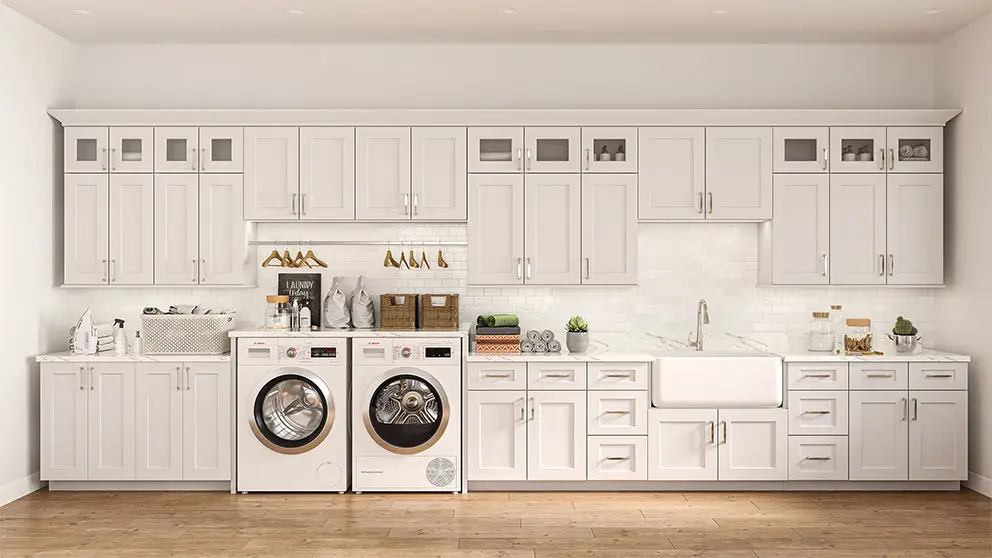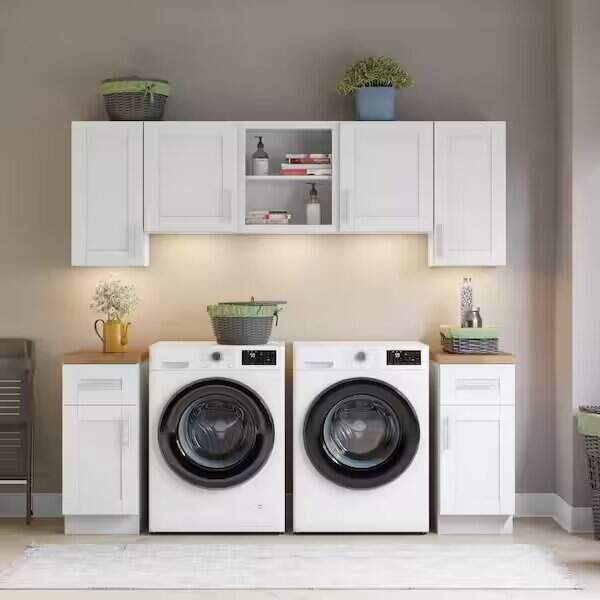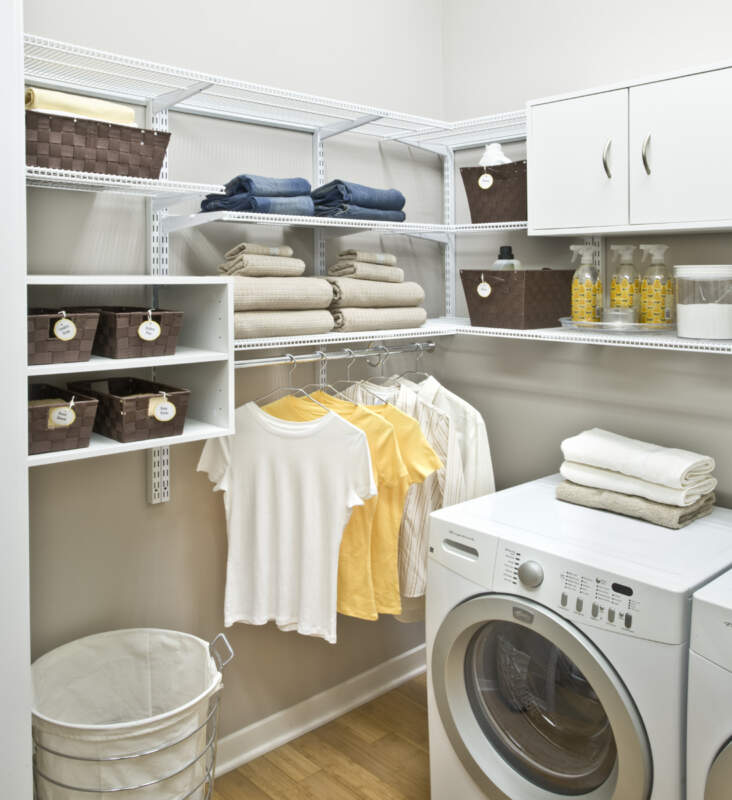Laundry room cabinets aren’t just for aesthetics; they are the unsung heroes of organization. With shelves and compartments designed to accommodate everything from detergents to fabric softeners, these cabinets maximize the utilization of space. Say goodbye to cluttered countertops and hello to a neatly organized laundry room. However, a well-designed and organized laundry space can significantly impact your daily routine. Now we have solved all your queries here.
What are laundry room cabinets?
Laundry room cabinets are essential storage units designed for organizing and storing various items in the laundry area. These cabinets typically come in a variety of styles, sizes, and materials, offering a functional and aesthetically pleasing solution for keeping laundry supplies, detergents, fabric softeners, and other essentials neatly arranged. The cabinets can also feature compartments for sorting and storing dirty laundry before washing. They contribute to creating an organized and efficient laundry space while enhancing the overall look of the room.
What kind of cabinets to use in the laundry room?
In a laundry room, the choice of cabinets depends on your specific needs, preferences, and the available space. Here are some common types of cabinets used in laundry rooms:
- Utility Cabinets:
- These are basic cabinets that offer simple storage space for laundry supplies, cleaning products, and other essentials.
- Wall-Mounted Cabinets:
- Ideal for smaller laundry rooms, wall-mounted cabinets save floor space and provide storage at eye level. They are great for storing items you need quick access to.
- Tall Cabinets:
- These cabinets extend from the floor to the ceiling, maximizing vertical space. They are suitable for storing brooms, mops, and other tall items.
- Open Shelves:
- If you prefer a more open and accessible look, open shelves can be a great choice. They allow you to easily grab items and can also serve as a display for decorative elements.
- Built-in Cabinets:
- For a seamless and customized look, consider built-in cabinets that are designed to fit your laundry room’s dimensions perfectly.
- Pull-Out Hampers:
- To streamline the laundry process, some cabinets come with built-in pull-out hampers or baskets, providing a designated space for dirty clothes.
- Drying Racks:
- Cabinets with integrated drying racks can be convenient for air-drying delicate clothing items.
- Fold-Down Ironing Board Cabinets:
- These innovative cabinets include a fold-down ironing board, saving space and offering a practical solution for ironing clothes.
Does adding laundry room cabinets add value?
Yes, adding laundry room cabinets can contribute to the overall value of your home. Here are a few reasons why:
- Increased Storage Space:
- Laundry room cabinets provide additional storage, which is often a valuable feature for potential homebuyers. Ample storage space can be a significant selling point.
- Organization and Efficiency:
- Well-designed cabinets can enhance the organization and efficiency of the laundry room. Potential buyers appreciate a space that is not only aesthetically pleasing but also functional and well-organized.
- Home Appeal:
- A thoughtfully designed and organized laundry room, including cabinets, can enhance the overall appeal of your home. It demonstrates that the property has been well-maintained and cared for.
- Customization:
- If you invest in custom cabinets that are tailored to the specific needs of the space, it can set your home apart in terms of uniqueness and attention to detail.
- Modern Features:
- If the cabinets include modern features such as built-in hampers, pull-out drying racks, or other convenient elements, it can make your home more attractive to potential buyers.
- Aesthetic Value:
- Cabinets contribute to the visual appeal of the laundry room. A well-designed and aesthetically pleasing space can leave a positive impression on potential buyers.

source





